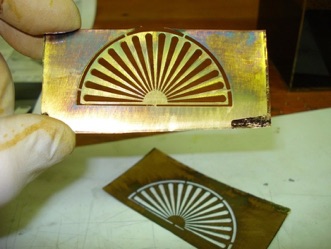Side Paddewheel Gunboat, U.S.S. Saginaw, 1859
USS Saginaw
In 1859, the first ship was launched from the newly established Mare Island Shipyard, across the bay from the bustling port city of San Francisco. She was originally name the USS Toucey, after the current Secretary of the Navy, but at her commissioning she was named the USS Saginaw.
The Saginaw was a shallow-draft side paddlewheel steamer built for China station. She was part of an appropriation of 6 ships that specified called for one of them to be a paddlewheeler and was the last paddlewheeler built prior to the start of the Civil War.
She was assigned to the East India Squadron to protect American interests from piracy and other dangers in the Far East.
Saginaw was lost in 1870 when she grounded on a reef in the pacific at what is now called Kure Atoll. Her crew managed to strip the ship and set up on a small island in the atoll. Using one of the ship’s condensers and copper pipe from the bridge speaking tube, they made a still to supply fresh water. Meanwhile one of the ship’s boats was modified to make a 1,500 mile journey to Hawaii to get help. The saga of the volunteers who made the journey is one of hardship and heartache, but ultimately led to the rescue of the Saginaw’s crew.
The Model
This is actually the first of possibly two models of the Saginaw that I intend to build. This model is being built at a scale of 1/8”=1’ or 1:96 scale. It is currently under construction, slated for completion in the Spring of 2013, and will be a plank-on-solid-hull Class “B” model. This classification, created by the Mystic Seaport Museum, means that the model has been built from scratch, but with the use of some commercially available fittings, such as cannons, ventilators, anchors, blocks, etc. This 1/8” scale model will represent the vessel shortly before her loss in 1870.
The core hull is made from basswood. This is built-up using the lift method, which is essentially building a stack of layers, each contoured to the shape of the hull. These are glued up and excess wood is carved away and then sanded to shape, allowing for the layer of planking to be added in a later step. The hull will be copper sheathed as was the original ship.
One of the more interesting features, and one of the most difficult to model, will be the framework of the paddlewheels which sit on either side of the hull. The open fan-like decoration that was on the face of the wheel house is especially challenging. To deal with this, I’m employing a technique of brass etching, whereby artwork is placed on a thin sheet of brass. The metal is bathed in an acid etchant which will dissolve any unprotected areas of the surface of the brass, leaving the artwork design in brass.
Plans for the Saginaw are from the U.S. National Archives, with copies obtained from the Maryland Silver Company.
Research
With only one known photo of the vessel and conflicting and incomplete details in the National Archives plans, the greatest amount of time spent on this model is in doing the research and planning for its construction.
Additional research was done at the Vallejo Naval and Historical Museum, with most of the additional information provided by Hans Van Tilburg and his book A Civil War Gunboat in Pacific Waters: Life on Board USS Saginaw. Another very useful book is the first hand account The Last Cruise of the Saginaw, by George H. Reed. Finally, a few trips to the regional National Archives in San Bruno, CA provided access to daily logs and correspondence of the Mare Island Naval Shipyard.
Visit the Vallejo Naval and Historical Museum.
Built in 1859, shortly before the Civil War, the U.S.S. Saginaw was the first warship built on the West Coast of the United States and also the first ship built at Mare Island Naval Shipyard.
The wreck of the Saginaw is a fascinating tale of survival best told by one of the survivors, George H. Reed, in his book The Last Cruise of the Saginaw.
The USS Saginaw model is a 1/8” scale (1/8” = 1’) scratch-built plank-on-solid-hull model constructed with a basswood core. Deck planking is boxwood, hull planking is holly, and a mix of other woods will be used for details. The completed model will measure about 24” long and 14” high overall.



